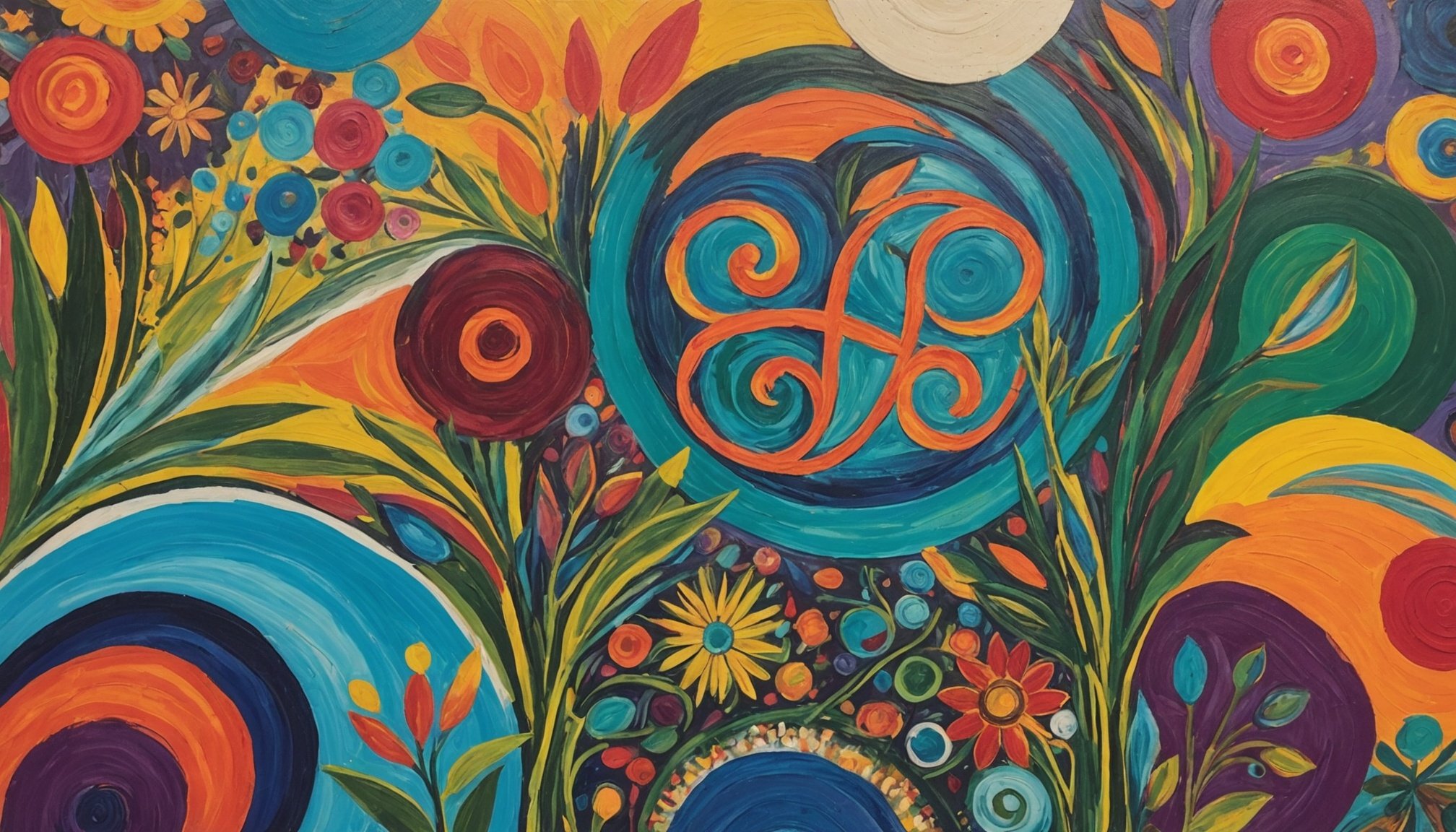Unlocking Recovery: How Art Therapy Transforms the Journey Beyond Addiction to Art Therapy in Addiction Recovery
When it comes to overcoming addiction, the journey to recovery is often complex and multifaceted. Traditional treatment programs, while effective, sometimes fall short in addressing the deep emotional and psychological aspects of addiction. This is where art therapy steps in, offering a unique and powerful tool for healing and transformation. In this article, we will delve into the world of art therapy and explore how it can revolutionize the recovery journey for individuals struggling with addiction.
The Therapeutic Power of Creative Expression
Art therapy is more than just a creative outlet; it is a therapeutic approach that leverages the power of art to promote emotional healing, self-awareness, and mental well-being. Here are some key ways in which art therapy supports addiction recovery:
Have you seen this : Enhancing health: the transformative impact of weekly tai chi sessions on middle-aged wellness
Encourages Self-Expression
One of the most significant benefits of art therapy is its ability to encourage self-expression. For individuals in recovery, articulating complex emotions such as guilt, shame, or anger can be incredibly challenging. Art therapy provides a nonverbal way to express these feelings, allowing individuals to process emotions they might otherwise suppress[1].
Reduces Stress and Anxiety
Engaging in creative activities like painting, drawing, or sculpting can significantly reduce stress and anxiety. These activities trigger the release of dopamine, a chemical linked to feelings of joy and relaxation. This natural response fosters a sense of well-being and satisfaction, which is crucial for managing the stress that often triggers relapse[1].
Also to read : Unlocking joint health: the surprising advantages of consistent tai chi practice
Promotes Self-Discovery and Awareness
Art therapy helps individuals explore their inner selves, uncovering aspects of their identity and past experiences that might contribute to their addiction. Through creating and reflecting on their art, participants gain new insights into their triggers, motivations, and behavioral patterns. This increased self-awareness empowers them to make conscious changes and work toward lasting recovery[1].
How Art Therapy Addresses Emotional and Mental Health
Art therapy is not just about creating art; it is a holistic approach that impacts various aspects of an individual’s health.
Enhances Emotional Resilience
Creating art requires patience and perseverance, traits that are vital for building emotional resilience. Addiction recovery is a challenging journey, and developing this resilience helps individuals better cope with setbacks. Art therapy teaches participants to persist through frustration, improving their ability to handle difficult emotions and situations in real life without relapsing[1].
Improves Communication Skills
Art therapy sessions often include discussions where participants share their work and insights. These discussions improve communication skills by encouraging individuals to describe their art and express their feelings openly. For those who have struggled to communicate effectively due to addiction, this aspect of art therapy fosters better interpersonal skills and encourages open, honest dialogue[1].
Fosters a Sense of Accomplishment
Completing a piece of art can instill a profound sense of accomplishment. Addiction often erodes self-confidence, leaving individuals feeling unworthy or incapable. Art therapy helps rebuild confidence as individuals take pride in their creations, experience personal growth, and learn to value their abilities and efforts[1].
The Neuropsychological Benefits of Art Therapy
Art therapy doesn’t just foster emotional growth; it also has a significant impact on the brain.
Accesses Implicit Memories
Creative activities in art therapy can tap into unconscious beliefs and early experiences stored in implicit memory, promoting processing and reframing. This can be particularly impactful for individuals with trauma or deep-seated emotional issues[2].
Alters Negative Neural Patterns
Visualization or guided imagery exercises in art therapy can rewire the brain’s pathways, fostering healthier self-perceptions. This can lead to improved self-esteem and a more positive mental outlook[2].
Reduces Stress
Engaging in creative expression lowers cortisol levels, easing anxiety and stress. This is crucial for individuals in recovery, as stress is a common trigger for relapse[2].
Practical Insights and Actionable Advice
If you or a loved one is considering art therapy as part of an addiction recovery program, here are some practical insights and actionable advice:
Finding the Right Program
When looking for an art therapy program, it’s essential to find one that integrates well with your overall treatment plan. Many residential detox centers and mental health facilities now offer art therapy as part of their comprehensive treatment programs. For example, the Avatar Residential Detox Center emphasizes the importance of integrating creative therapies like art therapy into their treatment programs[1].
Engaging Fully in the Process
To get the most out of art therapy, it’s crucial to engage fully in the process. This means being open to exploring your emotions through art, even if you don’t consider yourself “artistic.” Remember, the goal is not to create a masterpiece but to express yourself and process your emotions.
Combining with Other Therapies
Art therapy is often used in conjunction with other therapeutic approaches, such as music therapy or traditional talk therapy. Combining these therapies can provide a well-rounded treatment plan that addresses multiple aspects of recovery.
Benefits of Art Therapy: A Detailed List
Here is a detailed list of the benefits of art therapy in addiction recovery:
- Encourages Self-Expression: Provides a nonverbal way to express feelings and thoughts that may be challenging to articulate.
- Reduces Stress and Anxiety: Triggers the release of dopamine, fostering a sense of well-being and satisfaction.
- Promotes Self-Discovery and Awareness: Helps individuals explore their inner selves and gain new insights into their triggers and behavioral patterns.
- Enhances Emotional Resilience: Teaches participants to persist through frustration, improving their ability to handle difficult emotions.
- Improves Communication Skills: Encourages individuals to describe their art and express their feelings openly.
- Fosters a Sense of Accomplishment: Helps rebuild confidence as individuals take pride in their creations.
- Acts as a Constructive Way to Process and Release Negative Emotions: Provides a safe outlet for intense emotions like sadness, anger, and frustration.
- Encourages Mindfulness and Present-Moment Awareness: Promotes mindfulness, helping individuals distract themselves from cravings and thoughts about the past or future.
- Boosts Overall Mental Health and Well-Being: Alleviates symptoms of depression, anxiety, and other co-occurring disorders often associated with addiction[1].
Real-Life Examples and Anecdotes
To illustrate the impact of art therapy, let’s consider a real-life example:
“Sarah, a 30-year-old recovering from substance use disorder, found it difficult to express her feelings about her past traumas. Through art therapy, she began creating paintings that reflected her emotions. Over time, she was able to process her traumas in a way she never could with words alone. This process helped her build emotional resilience and eventually led to a more stable recovery.”
Table: Comparing Art Therapy with Traditional Therapies
| Aspect | Art Therapy | Traditional Talk Therapy |
|---|---|---|
| Expression | Nonverbal expression through art | Verbal expression through conversation |
| Emotional Processing | Allows for the processing of complex emotions through creative activities | Focuses on verbal communication to process emotions |
| Stress Reduction | Triggers dopamine release, reducing stress and anxiety | May use various techniques, but not as directly linked to dopamine release |
| Self-Awareness | Enhances self-awareness through reflection on art | Enhances self-awareness through verbal reflection |
| Communication Skills | Improves communication skills through art discussions | Improves communication skills through verbal interactions |
| Mindfulness | Promotes mindfulness and present-moment awareness | May incorporate mindfulness techniques, but not as central to the therapy |
| Accessibility | Can be used by individuals regardless of artistic talent | Requires verbal communication skills |
| Therapeutic Environment | Provides a judgment-free environment for expression | Can be more structured and less flexible |
Quotes from Experts and Participants
“Art therapy is a transformative tool that offers numerous benefits for those in addiction recovery. It equips individuals with the skill set to navigate recovery challenges by promoting self-expression, reducing stress, and fostering resilience.” – Avatar Residential Detox Center[1].
“Engaging in art-making empowers individuals to express themselves creatively, fostering greater self-worth and confidence. As clients observe their artistic progress, they gain a sense of accomplishment that boosts emotional resilience and encourages healthier relationships.” – New Horizons Recovery Centers[5].
Art therapy is a powerful and holistic approach to addiction recovery that offers a wide range of benefits. From encouraging self-expression and reducing stress to promoting self-discovery and enhancing emotional resilience, art therapy provides a unique and effective way to address the complex emotional and psychological aspects of addiction.
As we read through the stories and benefits of art therapy, it becomes clear that this approach is not just an adjunct to traditional therapies but a standalone tool that can significantly enhance the recovery journey. Whether you are an individual seeking help or a healthcare provider looking to integrate new therapies into your treatment programs, art therapy is definitely worth considering.
In the words of a participant in an art therapy program, “Creating art has given me a voice I never knew I had. It’s helped me process my emotions and find a sense of peace and fulfillment that I thought was lost forever.” This testament to the transformative power of art therapy underscores its potential to unlock recovery and pave the way for a healthier, more fulfilling life.







